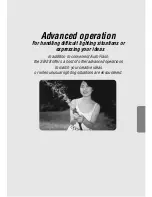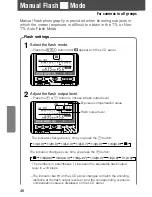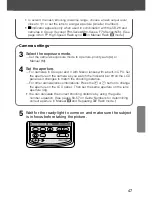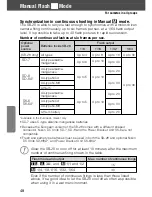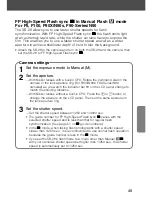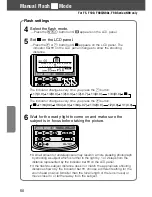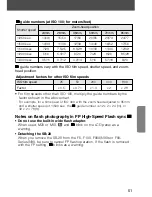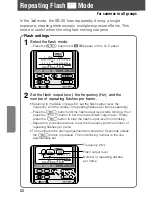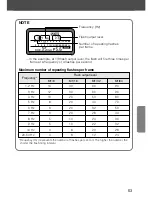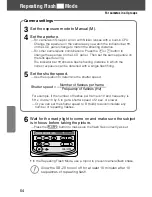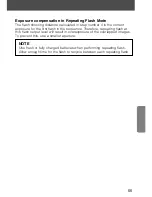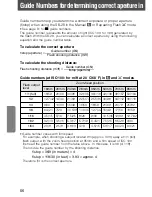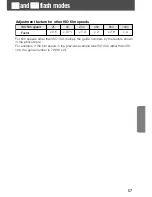
When taking pictures indoors, direct flash often causes harsh,
unattractive shadows on the subject or background. By bouncing
the light off the ceiling or walls, you can soften the shadows and
produce more natural-looking portraits.
With the SB-28's built-in bounce card, you can create a highlight in the
subject's eyes. (See page 61, Using the built-in bounce card.)
Bounce flash shooting using diffused light
Normal flash shooting using direct flash
1
Select the exposure mode.
—Set camera’s exposure mode to Aperture-priority auto (A) or Manual (M).
2
Set the aperture.
• With bounce flash, there is a 2 to 3 stop light loss or more, depending on
the height of the ceiling, when compared with normal flash operation.
Therefore, you should use the largest aperture (smaller f-number)
possible and bracket your exposures.
58
Bounce flash operation
Applicable to all camera groups
Camera settings
Summary of Contents for FSA02911 - SB 28 - Hot-shoe clip-on Flash
Page 1: ...Instruction Manual E SB 28 Autofocus Speedlight En ...
Page 44: ...44 ...


